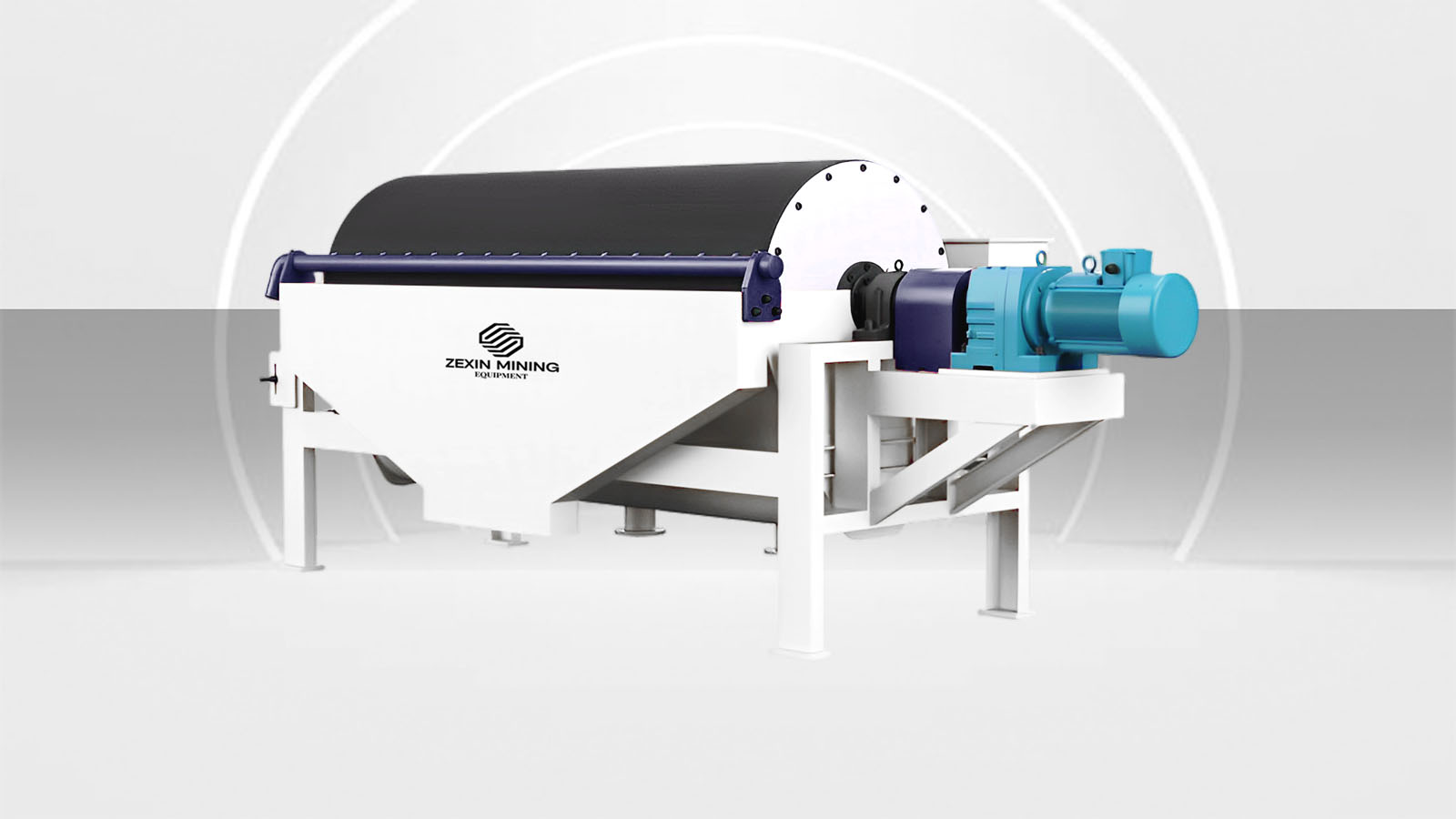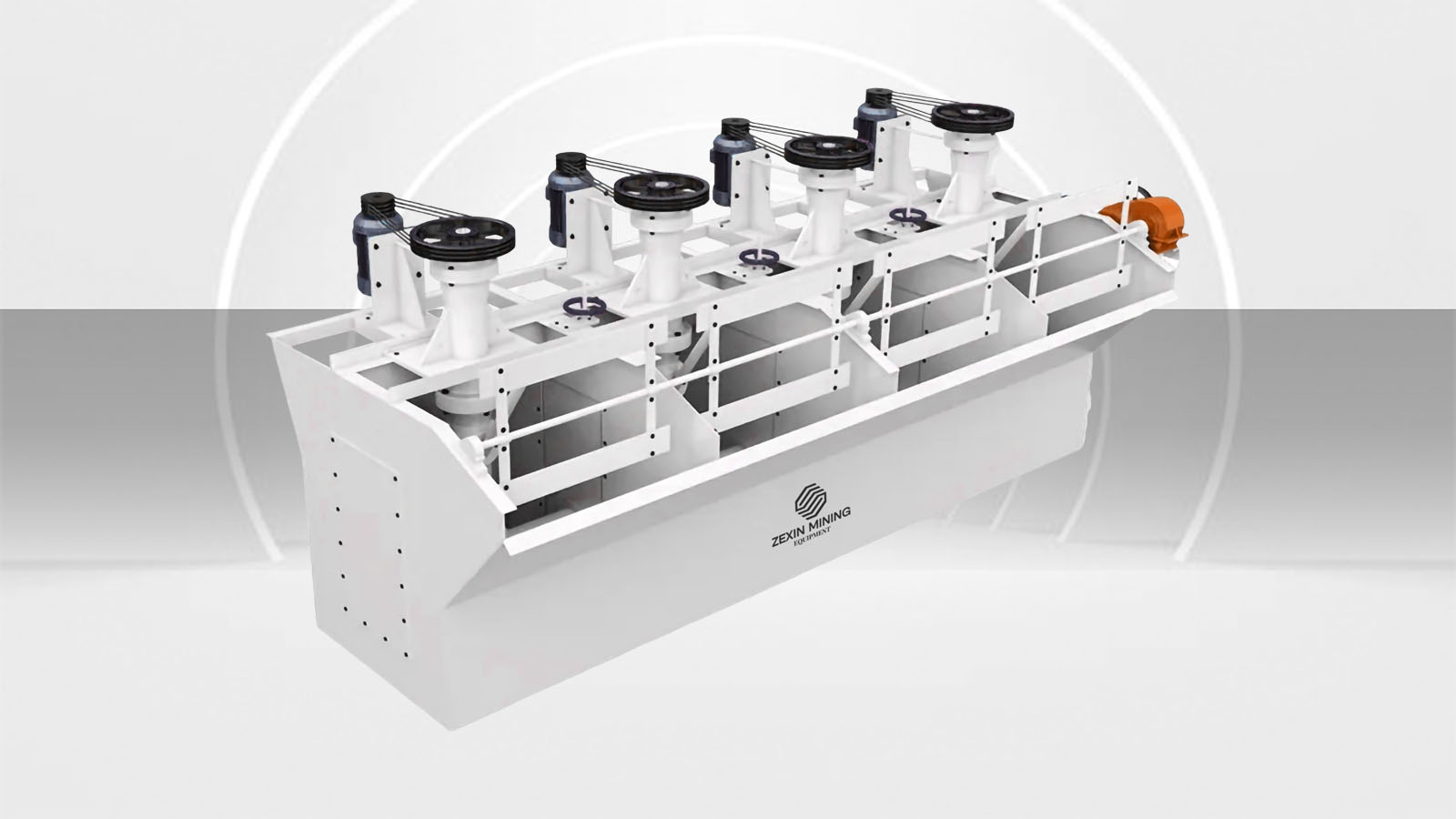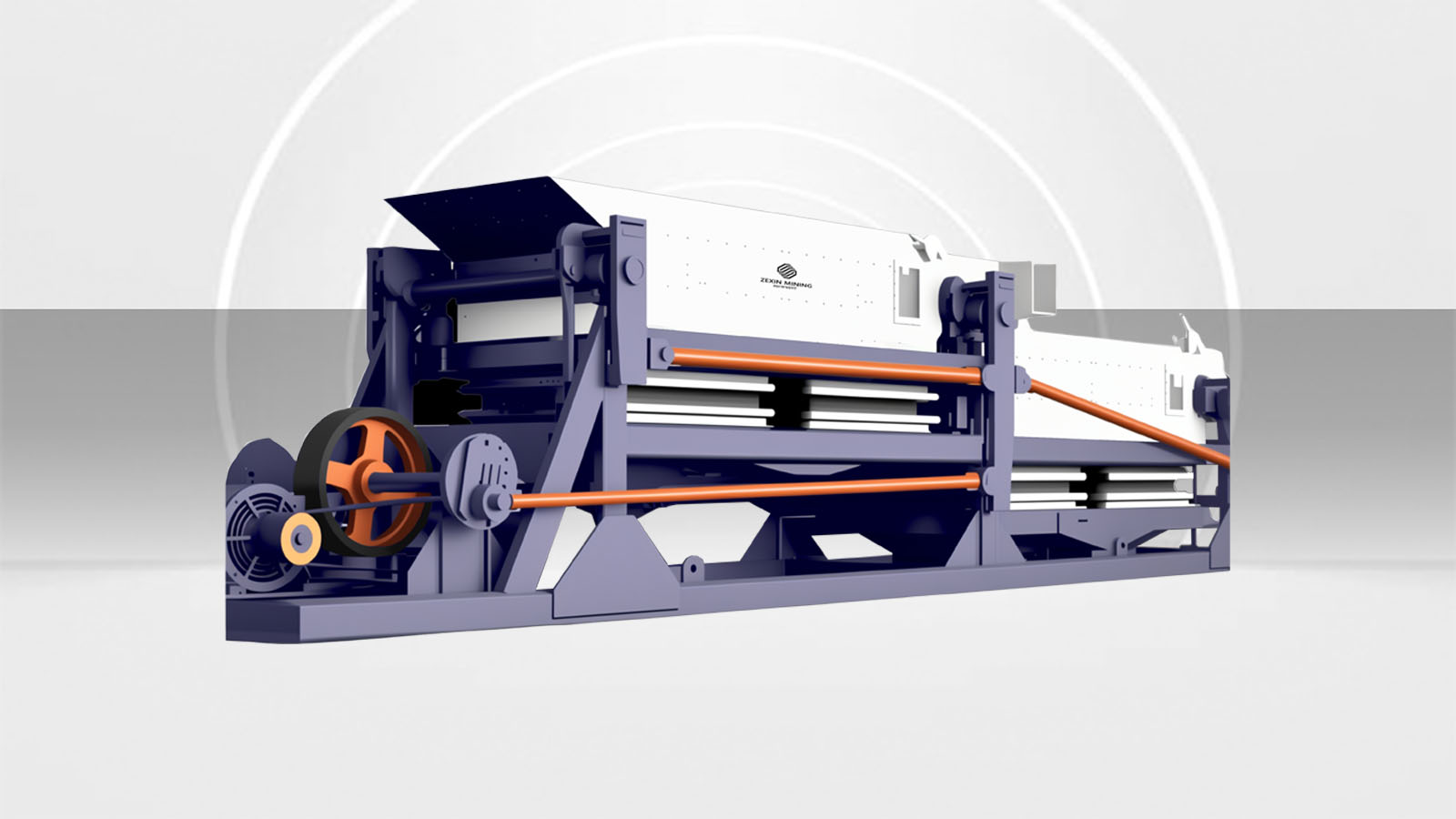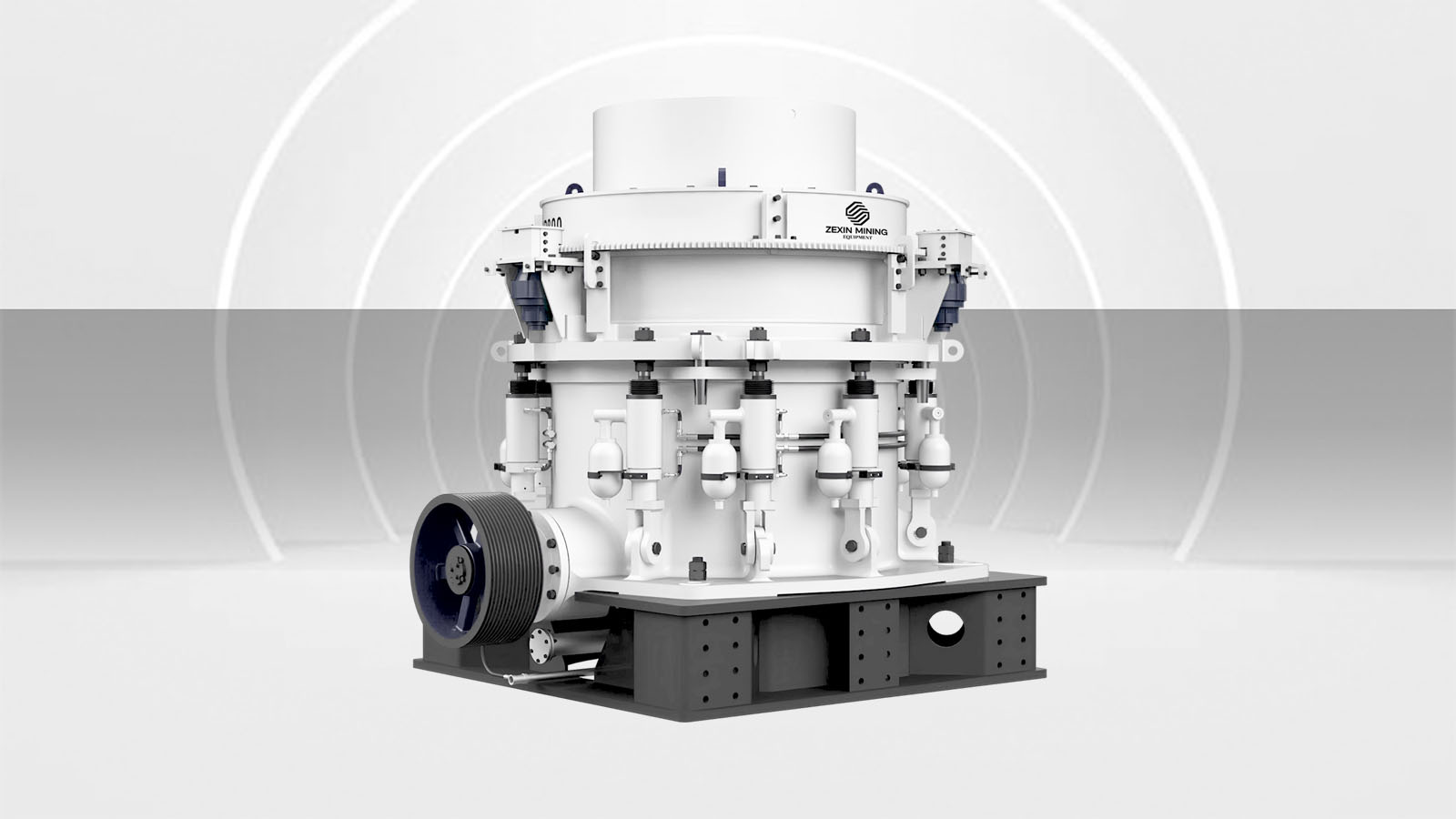
Permanent magnetic drum separators are vital equipment in mineral processing operations. These devices can be classified into three distinct operational modes—concurrent flow, counter-current flow, and semi-counter-current flow—based on the relationship between pulp movement and drum rotation direction. Each mode offers specific advantages for different ore properties and beneficiation requirements. This article provides a comprehensive comparison of these operational modes, analyzing their structural design, separation mechanisms, and industrial applications.
Basic Structure and Working Principles
1. Concurrent Flow Mode
In the concurrent flow design, the pulp flow direction matches the rotational direction of the magnetic drum. The feed pulp enters the tank and flows along the drum surface, where strongly magnetic minerals are attracted to the drum surface and rotate with it. When these particles reach the edge of the magnetic system (weak magnetic zone), they detach and enter the concentrate collection area. Non-magnetic minerals, under the influence of gravity and water flow, discharge directly from the tank bottom as tailings.
This operational mode features a simple tank structure without complex water spray systems. The separation zone is relatively concentrated, and the pulp retention time within the equipment is short, making it suitable for processing coarser ore particles. The concurrent flow allows non-magnetic minerals to discharge quickly, reducing interference with magnetic separation, though some weakly magnetic minerals may not have sufficient time to be captured and could be lost in the tailings.
2. Counter-Current Flow Mode
In counter-current designs, pulp flow direction opposes the drum's rotational direction, creating a confrontational movement pattern. The pulp must flow against the current through the entire magnetic field zone. Strongly magnetic minerals overcome the water flow resistance to adhere to the drum surface and are lifted by drum rotation to discharge at the feed side. Non-magnetic minerals flow with the current to the opposite end of the tank.
This operational mode significantly extends pulp retention time within the magnetic field, increasing the opportunity for magnetic mineral capture. It is particularly suitable for processing materials containing substantial weakly magnetic minerals. However, the counter-current movement also increases internal resistance within the equipment, potentially causing coarse particles to settle and accumulate at the tank bottom. This necessitates strict control of feed particle size and pulp density.
3. Semi-Counter-Current Flow Mode
The semi-counter-current design combines advantages from both previous modes. The pulp enters from the tank bottom, forming a vortex-like flow under the influence of the magnetic system. Water spray devices installed at the tank bottom generate upward water currents that enhance pulp dispersion and prevent entrainment of non-magnetic minerals. Magnetic minerals adhere to the drum surface, rotating and lifting with it before discharge, while non-magnetic minerals are carried away by the partial counter-current flow.
This operational mode maintains relatively high processing capacity while allowing flexible control of separation effects through adjustment of water spray intensity. It achieves a balance between concentrate grade and recovery rate, making it particularly suitable for fine-grained magnetic mineral purification that requires multi-stage processing.
Applicable Ore Types and Case Studies
1. Applications of Concurrent Flow Separators
Concurrent flow magnetic separators are primarily suitable for recovering coarse strongly magnetic minerals, such as magnetite and titanomagnetite, with particle sizes typically ranging from 6mm to 0mm. They find widespread application in coastal magnetic sand ore preliminary separation, river sand iron removal, and metallurgical raw material pre-treatment processes.
A typical application case is coarse separation of coastal sand deposits, where concurrent flow magnetic separators rapidly separate larger magnetite particles to produce rough concentrates with grades reaching 50-60%. This significantly reduces the processing load for subsequent concentration operations. Their high efficiency and operational reliability make them the preferred equipment for large-scale sand ore processing plants.
2. Applications of Counter-Current Flow Separators
Counter-current flow magnetic separators are well-suited for processing fine weakly magnetic minerals, such as hematite and limonite, with particle sizes generally between 0.6mm and 0mm. They excel in iron ore tailings reprocessing, low-grade complex ore treatment, and separation of magnetite from non-magnetic impurities.
In an iron ore tailings resource utilization project, counter-current flow magnetic separators were employed to process fine tailings below 0.3mm. By extending the contact time between pulp and magnetic field, they successfully recovered numerous fine magnetic particles typically lost in conventional separation processes. This increased metal recovery by over 15%, generating significant economic benefits for the enterprise.
3. Applications of Semi-Counter-Current Flow Separators
Semi-counter-current flow magnetic separators are most appropriate for fine and ultra-fine strongly magnetic mineral concentration and purification, typically handling particle sizes between 0.5mm and 0mm. They are widely used in high-grade iron concentrate production, metallurgical-grade concentrate purification, and specialty mineral separation requiring high precision.
In a steel company's concentrate quality improvement project, replacing traditional equipment with semi-counter-current flow magnetic separators increased iron concentrate grade from 62% to over 67% while maintaining high recovery rates. The key advantage was the unique vortex flow structure, which effectively reduced entrainment of non-magnetic gangue and improved separation precision.
Process Parameter Optimization and Technology Trends
1. Impact of Key Process Parameters
To fully leverage the advantages of different operational modes, specific optimization of key process parameters is necessary:
Magnetic System Offset Angle: Concurrent flow typically employs larger angles (120-150°) to ensure sufficient magnetic adsorption areas; counter-current flow uses smaller angles (90-120°) to balance magnetic force and fluid resistance; semi-counter-current flow adopts medium angles (100-135°) to work with vortex flow patterns for optimal separation.
Tank Gap: Concurrent flow generally maintains larger gaps (10-15mm) to ensure adequate flow; counter-current flow requires smaller gaps (6-10mm) to enhance magnetic field strength; semi-counter-current flow flexibly adjusts based on concentration requirements, typically between 8-12mm.
Feed Concentration: Concurrent flow is suitable for high-density feeds (25-35%) to utilize high processing capacity; counter-current flow must be controlled at medium density (15-25%) to prevent clogging; semi-counter-current flow performs best under low-density conditions (10-20%) to ensure precise separation.
2. Technological Innovation and Development Trends
Technological innovations across the three operational modes of permanent magnetic drum separators are primarily focused in the following areas:
Magnetic System Optimization: Employing high-performance neodymium-iron-boron and ferrite composite magnetic systems to achieve precise control of magnetic field gradients and improve capture capacity for weakly magnetic minerals.
Intelligent Control: Introducing online monitoring and automatic adjustment systems that adapt process parameters in real-time based on changing feed characteristics, maintaining stable separation performance.
Structural Innovation: Developing variable-angle magnetic systems and multifunctional composite magnetic separators that can flexibly switch between multiple operational modes, adapting to complex and varying beneficiation requirements.
Conclusions and Selection Recommendations
Each operational mode of permanent magnetic drum separators offers distinct advantages: concurrent flow excels in high throughput and operational simplicity; counter-current flow focuses on improving recovery rates; and semi-counter-current flow maintains good concentrate grades while achieving reasonable recovery. Equipment selection should consider multiple factors:
- Ore Characteristics: Magnetic intensity, particle size distribution, and mineral dissemination characteristics
- Process Position: Different requirements for roughing, cleaning, or purification stages
- Production Scale: Processing capacity and spatial constraints
- Product Specifications: Balance requirements between concentrate grade and metal recovery
As mineral processing technology continues to evolve and ore grades gradually decline, permanent magnetic drum separators will progress toward greater efficiency, precision, intelligence, and environmental sustainability. The technical boundaries between the three operational modes will become increasingly blurred, with composite and adjustable designs becoming industry standards.
Related News

Flotation Equipment Tank Issues: Analysis of 8 Common Problems and Solutions

Comprehensive Analysis of Mining Jigs: Classifications, Principles and Industrial Applications
